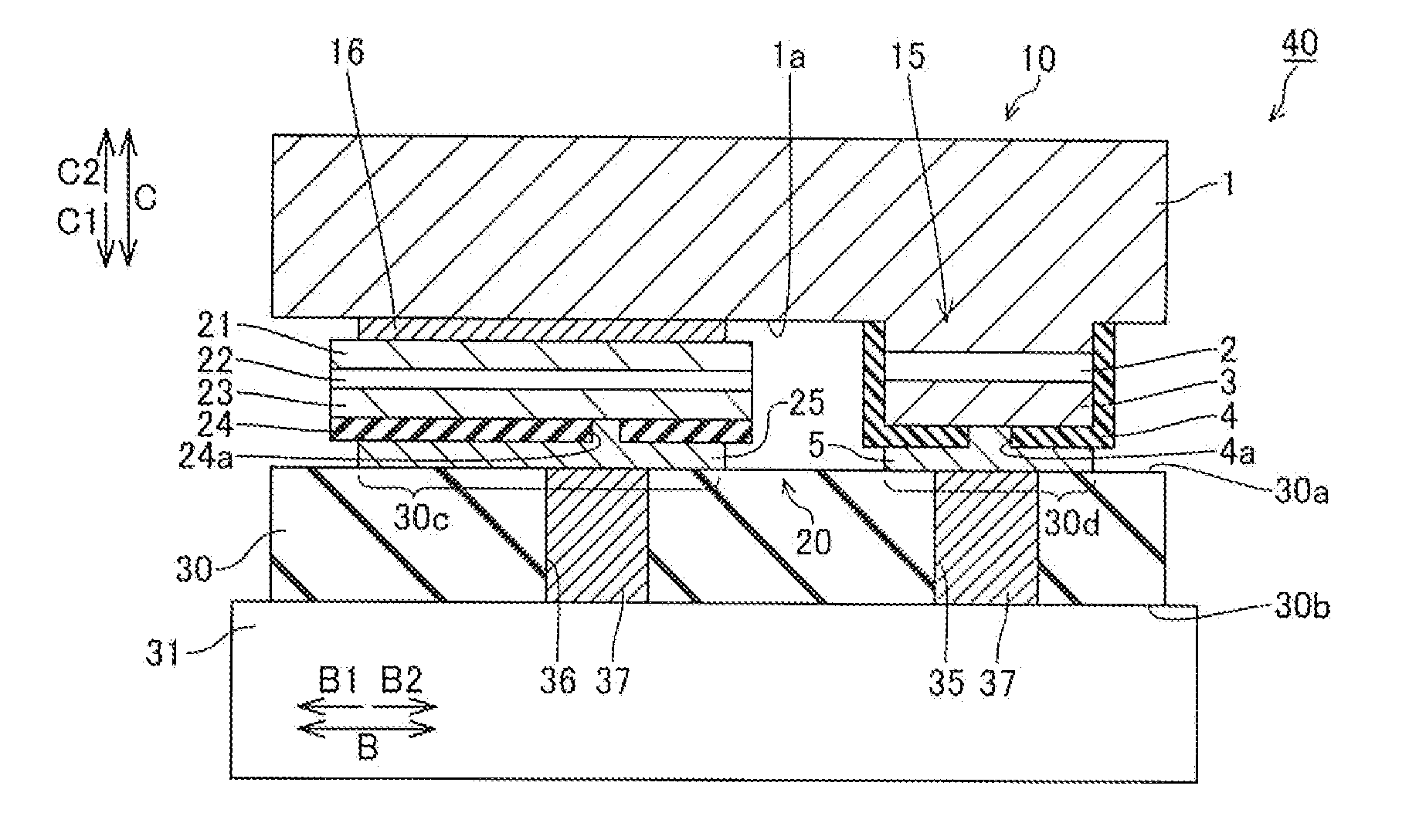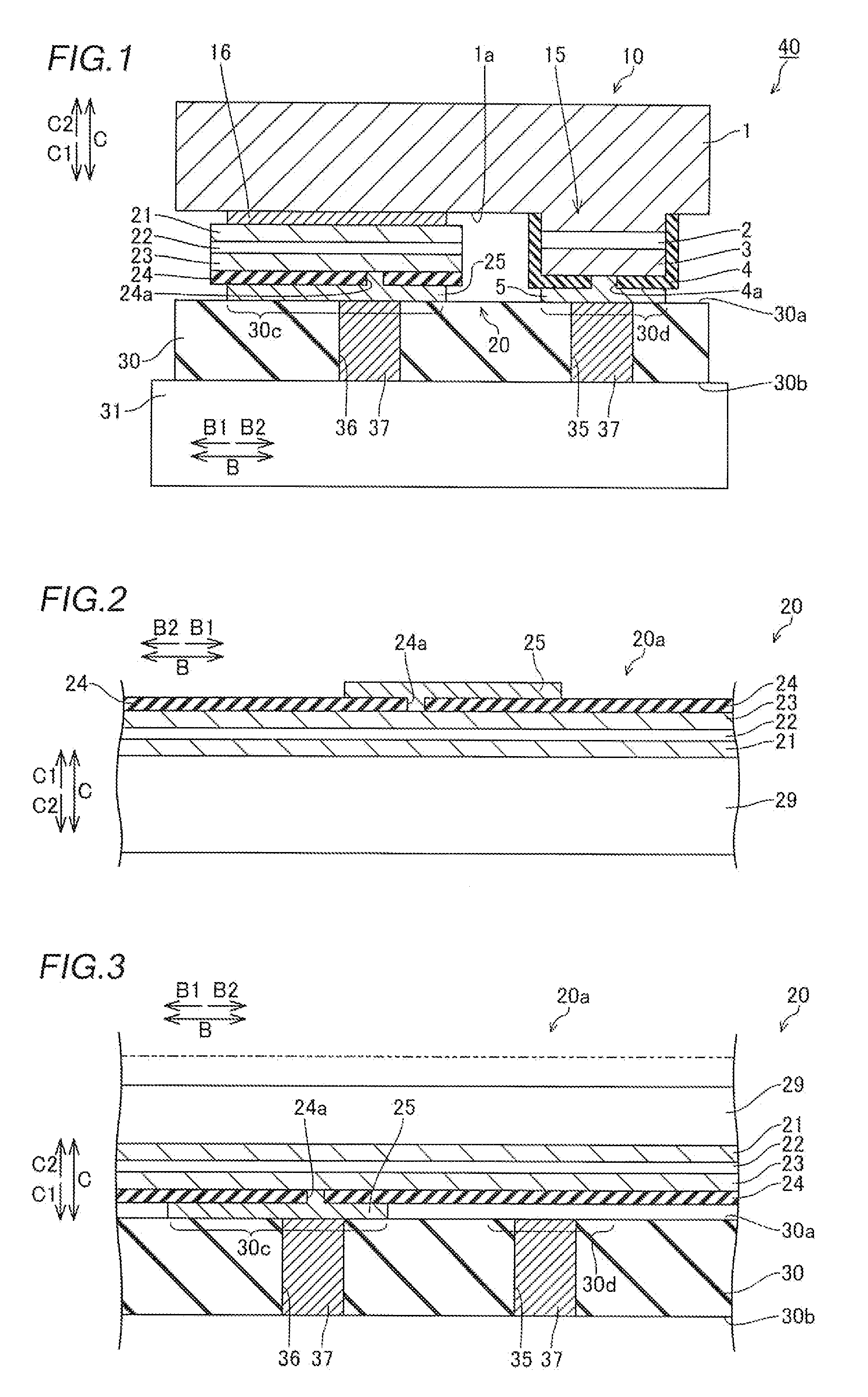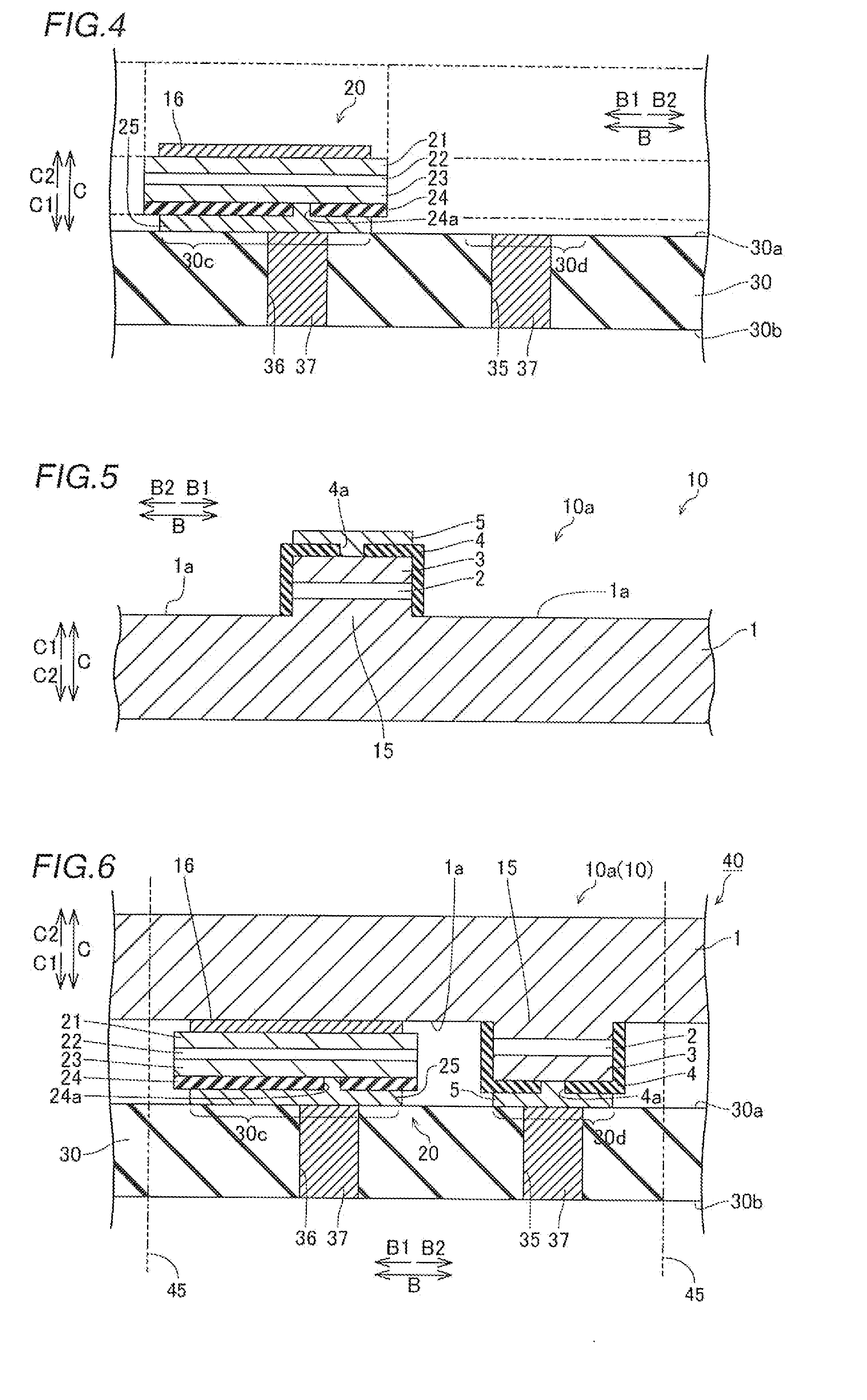Semiconductor Laser Apparatus
a laser apparatus and semiconductor technology, applied in the direction of lasers, semiconductor laser arrangements, semiconductor lasers, etc., can solve the problems of inconvenient pickup, inability to integrate blue-violet semiconductor laser devices with infrared and red semiconductor laser devices in one chip, and difficulty in simplifying the configuration or price reduction of pickups, etc., to achieve easy adjustment and increase the diameter of individual vias
- Summary
- Abstract
- Description
- Claims
- Application Information
AI Technical Summary
Benefits of technology
Problems solved by technology
Method used
Image
Examples
first embodiment
[0135]A structure of a semiconductor laser apparatus 100 according to a first embodiment of the present invention is described with reference to FIGS. 7 and 8. FIG. 7 shows a section taken along the line 1000-1000 in FIG. 8.
[0136]The semiconductor laser apparatus 100 has a structure in which a blue-violet semiconductor laser device 50 and a two-wavelength laser device 60 are bonded onto a surface of a support substrate 101 made of insulating Si to be adjacent to each other in a lateral direction (direction B), as shown in FIG. 7. The blue-violet semiconductor laser device 50 has a lasing wavelength of about 405 nm and a cavity length of about 800 μm. The two-wavelength laser device 60 is monolithically formed with a red semiconductor laser device 70 having a lasing wavelength of about 650 nm and a cavity length of about 1.5 mm and an infrared semiconductor laser device 80 having a lasing wavelength of about 780 nm and a cavity length of about 1.5 mm. The blue-violet semiconductor la...
first modification
of First Embodiment
[0194]A first modification of the first embodiment is described with reference to FIG. 14. According to the first modification, a GaAs substrate 65 partly remains in a two-wavelength laser device 60a brought into a chip state, dissimilarly to the first embodiment. In the figure, a structure similar to that of the semiconductor laser apparatus 100 according to the first embodiment is denoted by the same reference numerals. The two-wavelength laser device 60a is an example of the “integrated laser device” in the present invention.
[0195]In a semiconductor laser apparatus 100a according to the first modification, as shown in FIG. 14, an n-side ohmic electrode 62 and an n-side pad electrode 63 for conducting with an n-type GaN substrate 51 of a blue-violet semiconductor laser device 50 are formed on an upper surface of an n-type contact layer 61 formed with a red semiconductor laser device 70 on the lower portion in the two-wavelength laser device 60a. The GaAs substra...
second modification
of First Embodiment
[0198]A second modification of the first embodiment is described with reference to FIGS. 15 and 16. According to the second modification, pad electrodes 92 and 93 for bonding a two-wavelength laser device 60 are formed on an n-type Si support substrate 130 having conductivity through an insulating film 131 made of SiO2 dissimilarly to the first embodiment. FIG. 15 shows a section taken along the line 1100-1100 in FIG. 16. In the figures, a structure similar to that of the semiconductor laser apparatus 100 according to the first embodiment is denoted by the same reference numerals. The Si support substrate 130 is an example of the “support substrate” in the present invention.
[0199]In a semiconductor laser apparatus 100b according to the second modification, a blue-violet semiconductor laser device 50 and the two-wavelength laser device 60 are bonded onto a surface of the n-type Si support substrate 130 having conductivity to be adjacent to each other, as shown in F...
PUM
 Login to View More
Login to View More Abstract
Description
Claims
Application Information
 Login to View More
Login to View More - R&D
- Intellectual Property
- Life Sciences
- Materials
- Tech Scout
- Unparalleled Data Quality
- Higher Quality Content
- 60% Fewer Hallucinations
Browse by: Latest US Patents, China's latest patents, Technical Efficacy Thesaurus, Application Domain, Technology Topic, Popular Technical Reports.
© 2025 PatSnap. All rights reserved.Legal|Privacy policy|Modern Slavery Act Transparency Statement|Sitemap|About US| Contact US: help@patsnap.com



